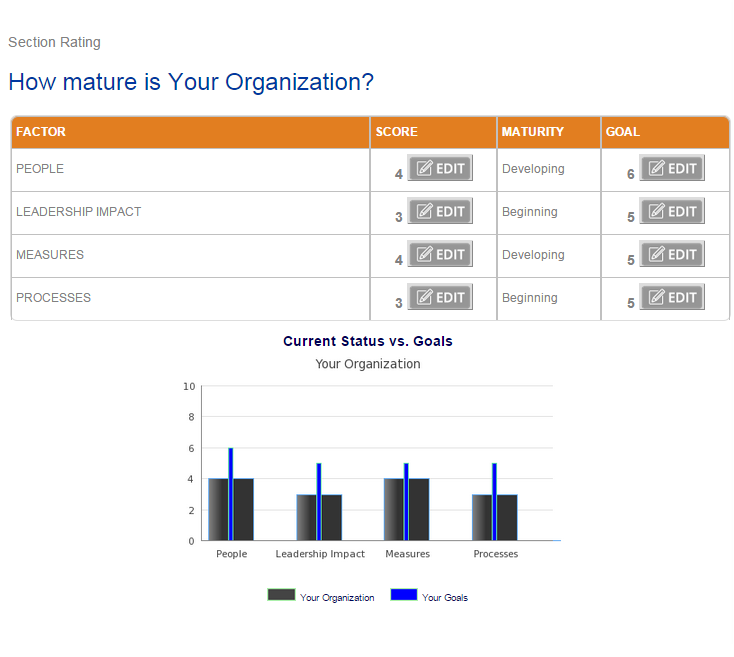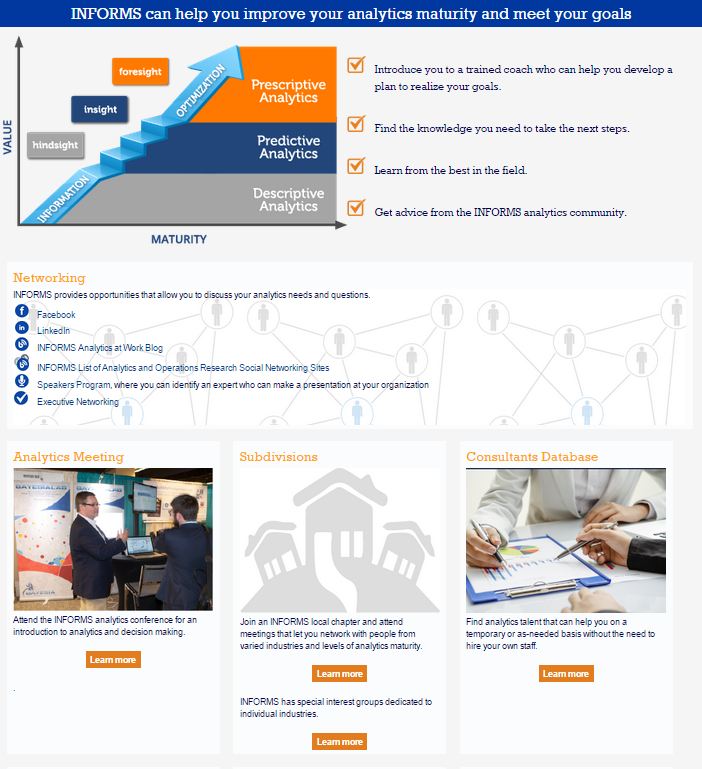INFORMS Analytics Maturity Model
User Guide
Introducing the INFORMS Scorecard
INFORMS, the leading association for advanced analytics professionals, seeks to advance the practice, research, methods, and applications of advanced analytics by providing valuable, relevant guidance to individuals and institutions as they pursue analytics initiatives. INFORMS considers analytics to be the scientific process of transforming data into insight for making better decisions. In INFORMS' view, Analytics is broadly inclusive and encompasses practices and techniques from multiple disciplines.
To advance the practice of analytics, INFORMS has developed an Analytics Maturity Model (AMM) scorecard that serves to:
- Introduce an analytics function/department to corporations and organizations that don't currently have an analytics capability;
- Enable those already involved in analytics to assess their level of effectiveness (i.e. beginning, developing, advanced);
- Help plan improvements to the analytical function in order to solidify their strengths;
- Help advance their function to a higher level.
The scorecard is based on twelve questions that indicate your organization's analytics maturity. The questions are grouped into three broad sections:
- Organizational — does your organization have the practices and culture to enable effective use of analytics?
- Analytics Capability — does your organization possess the methods, models, and services needed to perform analytics?
- Data & Infrastructure — are data sufficiently integrated and infrastructure present to support analytics?
The questions provide focus areas for benchmarking capabilities and identifying specific actions that your organization might take to improve analytical maturity. Further explanations of key terms used in the questions are provided in the appendix.







